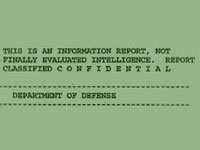Published annually by the State Department, Foreign Relations of the United States (FRUS) is the official record of major declassified U.S. foreign policy decisions and diplomatic activity. Material, including transcripts of tape recordings, comes from Presidential libraries and executive departments and agencies. Digitized material does not reflect the full range of the published volumes. Documents included have been selected for their ability to illuminate "policy formulation and major aspects and repercussions of its execution."
The first website covers the years from 1861 to 1960. Each volume of more than 500 pages contains an annual message from the President, a list of papers with subjects of correspondence, circulars on subjects such as sanitation and conservation, and chapters dedicated to individual nations. Decisions involve a wide range of topics, including international arbitration and the protection of migratory birds. Visitors may search volumes individually or the whole set by keyword, subject, and date.
The second website offers materials from 19451972. Materials come from the Truman, Eisenhower, Kennedy, Johnson, and Nixon administrations. Additional volumes will be added on the Nixon and Ford administrations.



